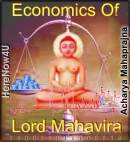
Question:
Does the principle of non-possession flourish from non-violence or non-violence flourish from non-possession?
Answer:
That ‘non-violence is the supreme religion' is regarded as the great saying of the Jain religion. How can I say that there is no truth in this? But I look at this truth the other way round. The first truth is 'non-possession is the supreme religion', then comes another truth after it 'non-violence is the supreme religion’. This is totally a psychological phenomenon that man does not acquire possessions for violence, but develops and acquires non-possession. The central point of possession or acquisition is man's own body. From there the awakening of possession/acquisition spreads. A religious person starts practicing religion with kayotsarga, or with freedom from physical misperceptions. As the sense of attachment with body goes on decreasing, the blind desire for possession also goes on diminishing. Only he who abandons the Illusion, the state of the body can be clothed or unclothed.
Man is a living creature. The sense of living is not mechanical. Accordingly, all the people are not alike. In them there are differences of likes, thoughts, thinking and mental dispositions. That is why like for the lifeless world, no universal rule can be made for the living world. It does not seem possible that all those who renounce possessions as a matter of religion become followers of the practice of non-possession. But some of them can turn out to be so. It is not possible that every one of them would follow that path. Our thinking becomes complicated because we adjudge the follower of religion and religious persons by the same standards. The follower of religion is one who lives by accepting religion as good, but he is not capable of fully practicing it. It would be unrealistic to assume that all the followers of Jain religion would renounce possessions completely.
People can enjoy taking interest in religion-inspired activities; they cannot enjoy taking that interest in practicing religion. They can abide by the formal role of religion, but cannot be sensitised fully by the spirit of religion. This distance between the two axes is the product of man's inner capacity. Between these two, the configuration of principles is linked. This is why we should not reject the fact that a follower of religion exercises moderation, but that he is not able to live the life of a vrati. We should not have the same expectations from followers of religion, from those looking at religion as noble and from those who are religious and vratis, totally dedicated.
 Acharya Mahaprajna
Acharya Mahaprajna

